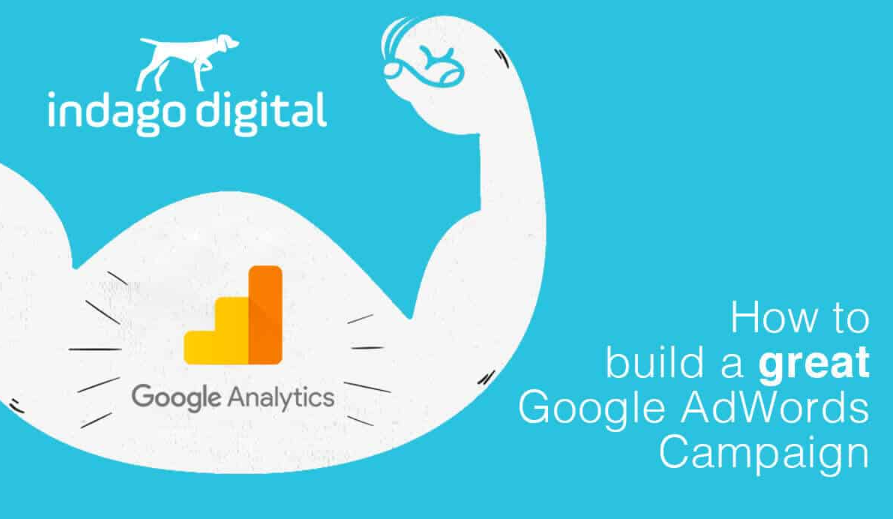The zone
Did Da Vinci work in an open-plan office? Probably not; I’m not an expert on professional standards in the high Renaissance period.
It will be almost impossible to create art if you’re distracted by the circus of office life. It seems you can’t shake a tree in North Sydney without a ping-pong table and a couple of executives clutching paddles falling out of it.
Isolate yourself somehow, or you’ll never produce anything of value. That’s why Da Vinci invented noise-cancelling headphones. It’s true, look it up.
Granulate
I’m a bit of an engineering geek, I love looking at the way things are put together and how they work. Take a bridge; even the grandest, most impressive feat of engineering is made up of lots of little parts: girders, cables, brackets, rivets, graffiti.
If you want to win in the search market, you need to engineer the highest quality score for your inventory sets. This means a relevancy chain from a search query, through matched keywords, through the served ad, through to the landing page. Use the same variables to build your keyword templates as well as your ad templates. Connect the dots to win a good quality score!
You need to take that immense data set and make it manageable. Break it down into its constituents and construct a list of elements you can use to inform your build. Products are easy; the data set probably already does that for you. What about the rest? Don’t just throw your Brand + Geo keywords into one campaign; segment by state and then segment ad groups by cities/towns/neighbourhoods. How are you going to manage your match types? (Hint: don’t throw them all in the one ad group. Please.)
Take your list, run keyword research on it & expand the list. Rinse and repeat.
Logical naming convention
Remember when you were a kid, and your room was a total disaster? Remember that time your mum made you clean it up, and it took forever, but you found all that cool stuff you thought you’d lost & forgotten about? Accounts aren’t like that, but they’re a bit like that, and that’s good enough for my therapist.
The way you name your campaigns serves as a map of the account. This is critical when your account is a giant, hairy monster with elements coming on and going off at different times, campaigns targeting other geos, or involving multiple channels.
Please keep it clean by implementing a standard naming convention which you can use across all of your campaigns & ad groups across all of your channels. An example of an ad group naming convention would be something like this:
Geo | Channel | Network | Type | Initiative | Variable | Match Type
Here, the campaign naming template describes exactly what the campaign contains, who it’s targeting, what it’s supposed to do and what variable is being used to construct the keywords & ad copy templates. Let’s say you have an SEM campaign targeting users in New Zealand searching for backpacks, specifically hiking packs. That ad group naming convention would look like:
NZ | G | S/SP | NonBrand | Backpacks | Hiking Packs | Exact
It might be a mouthful, but it eliminates ambiguity and will make your life easier when the thing finally goes live.
Templates
Introducing the nested IF statement.
Using only a few Excel functions you can construct hugely robust templates that will test your data and return targeted values you specify. Here’s a boring, technical example of a headline template:
=IF(LEN(“Headline Option “&A1)<26, “Headline Option “&A1,”Option 2”)
This formula will test the “Headline Option ” character count and whatever is in cell A1. If the combined character count fits in the headline field, it will go with that; if not, it will go with “Option 2”. Instead of defaulting to that, you can put another IF(LEN statement to test another line of copy.
Test progressively shorter lines of text to ensure you are using the most targeted line of copy for your variables as you can. Finally, end the formula with a default line of copy for when nothing will fit in a headline. Usually, this is a brand message or a category-level statement.
You can do other things too; start your formula with IF(ISNUMBER(SEARCH(“Brand”,B1)) to test whether the variable in your Type column is for brand keywords. Then, you can write the formula to split it into two streams: one template for brand headlines and one for product-related keywords.
Play around with formulas and see what you can get them to do. You’re a search professional; that means you’re already straddling the line between genius and crazy. Use your ingenuity and start working smarter instead of harder.
Finally, never stop looking for a better way to do things.
Written by
Luke Ashmore-Delaney





